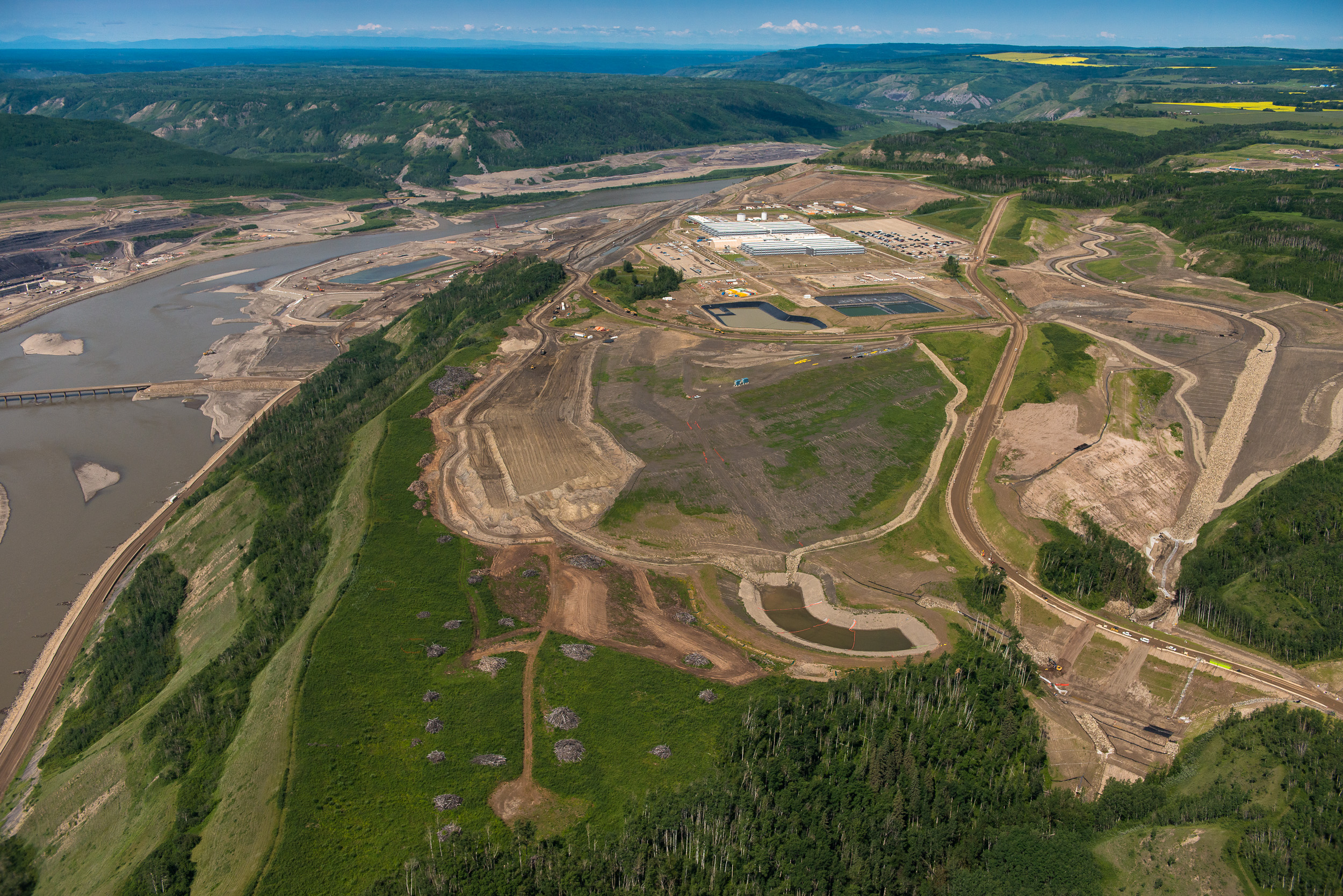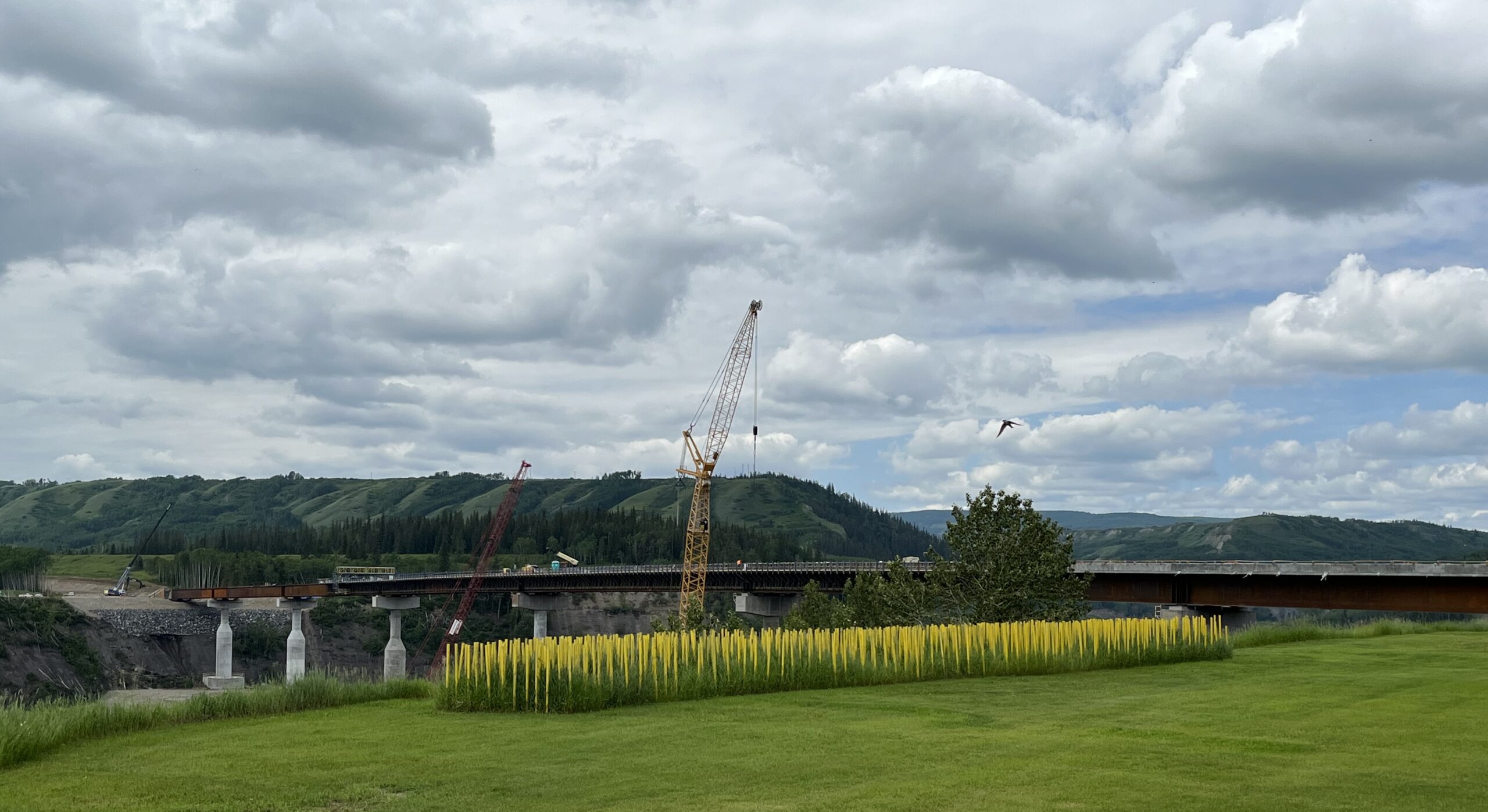
Rocky Mountain coal mine in Alberta takes next step to expansion
In Alberta, a massive open-pit coal mine near Jasper National Park is hoping to expand...
After a decades-long fight against the Site C dam, Monday was a bittersweet day for West Moberly First Nations Chief Roland Willson.
The Nation and the province announced a partial settlement agreement has been reached over the beleaguered hydroelectric project on the Peace River in northeastern B.C., which will see the release of West Moberly’s claims against the Site C project in exchange for an impact and benefits agreement and contracting opportunities.
“Site C has progressed to a point where it is unlikely that any judge will order the dam dismantled. Because of this, we have reluctantly agreed to settle that portion of our court case related to Site C,” read a statement from West Moberly First Nations.
“The final nail in the coffin was a while ago,” Chief Roland Willson told The Narwhal. “They had no intention of stopping.”
“We’re never going to be in agreement with Site C. That’s never going to happen. And every time we drive by that development it’s going to be a constant reminder of what’s been done to us,” Willson said. “Forcing us into this situation like this is not something to be proud of. They beat us into submission, basically.”
A 2014 federal-provincial review of the Site C dam found the project would cause “significant adverse effects” to First Nations’ fishing, hunting and trapping. Construction on the project began in 2015, with then-premier Christy Clark vowing to get the project past the “point of no return.” In 2019, the United Nations Committee on the Elimination of Racial Discrimination called for the B.C. government to suspend construction of the Site C dam until the project obtained the “free, prior and informed consent” of Indigenous Peoples, but construction continued.

Asked about the toll fighting the dam for three decades has taken on his Nation, Willson said “it’s massive.”
“We’ve expended an enormous amount of energy, an enormous amount of goodwill from our supporters. And that’s the sad part of this is we kinda feel we’ve let people down. But the reality is we’ve done everything that we could do to try to stop this and they just kind of ran over us,” he said. “We’re at the point now where we’ve got to pick up the pieces.”
The Site C dam is a 1,100 megawatt hydro dam that has been proposed as the third dam on the Peace River since the 1970s. The cost of the project has ballooned from $7.9 billion since 2014, when it was reviewed by a federal-provincial panel, to over $16 billion, making it both the costliest dam in Canadian history and the most expensive publicly funded infrastructure project in B.C. history. When Site C is completed, it will flood 128 kilometres of the Peace River and its tributaries, putting Indigenous burial grounds, traditional hunting and fishing areas, habitat for more than 100 species vulnerable to extinction and some of Canada’s richest farmland under up to 50 metres of water.
In its decades-long fight against the dam, West Moberly First Nations launched judicial reviews and made an injunction application, before filing a civil lawsuit against the province.
West Moberly will direct the benefits of the Site C settlement toward reclaiming and restoring land, revitalizing the community’s culture and “protecting the best of what’s left.”
The remainder of the civil claim, which relates to the cumulative impacts of resource development and previous dams on the Peace River, has not been settled but has been paused while the Nation and the province enter confidential discussions to resolve matters.
“I appreciate that it has been a difficult decision for West Moberly to resolve its claims against Site C,” Chris O’Riley, president and CEO, BC Hydro said in a joint press release. “These agreements provide us a foundation to move forward together in a manner that fosters a mutually beneficial relationship.”
Peace Valley farmer Ken Boon, an outspoken critic of the Site C dam, said the settlement agreement seemed “inevitable.”
“I tip my hat to West Moberly. They truly tried to stop this dam and save the valley and unfortunately that wasn’t to be,” he said.

Boon had hoped that the West Moberly fight would help light a way forward to resolve this type of conflict differently in the future, but he doesn’t feel hopeful after reading the comments from government and BC Hydro in their press release on the settlement.
“On the surface, I don’t see any change from the government or BC Hydro’s perspective on how projects will be brought forward or moved forward and that’s what we need. We can’t afford to do any more bad projects like this in the face of climate change and reconciliation,” Boon said. “We’ve got to have a better way of advancing projects. It should have never gotten to this stage.”
Asked if the fight against Site C is officially over, Boon said: “If anything is going to stop it now, it’s probably going to be geotechnical problems.”
An investigation by The Narwhal’s Sarah Cox in 2020 revealed that senior officials with the B.C. government knew about deepening geotechnical problems and budget issues for more than a year before the public was informed.
“We’ve already seen how the B.C. government and BC Hydro will literally move mountains of dirt and mountains of money to keep this thing going and I expect they’ll continue doing that and probably get a project built,” Boon said.

Boon said many people have already left the Peace Valley, but he and his wife Arlene are still living in their third-generation farmhouse, enjoying a lush, green landscape after a wet spring. On Tuesday morning, just like hundreds of mornings before, they got up at 6 a.m., listened to the birds singing and put on a pot of coffee.
While they are feeling sad about news of the settlement, they are still finding beauty amidst it all.
“Right here, at our house, we still look out and it’s still fairly beautiful, despite some of the destruction that you have to look at,” Boon said. “The swallows are here in force. They’re just a joy, hey? You can’t help but be a little cheerful when there’s literally hundreds and hundreds of swallows of three different species that converge on our yard every year. I like to think that they’re old buddies that come back every year.”
Once the reservoir flooding begins in 2023 the Boons’ future is uncertain, but they are going to do everything they can to stay in the valley.
“I can’t think of any place I’d rather live,” Boon said. “We know our days are numbered in the current situation. We’re kinda just rolling with the punches.”
Get the inside scoop on The Narwhal’s environment and climate reporting by signing up for our free newsletter. A $335 million funding commitment to fund...
Continue reading
In Alberta, a massive open-pit coal mine near Jasper National Park is hoping to expand...

A trade war could help remake B.C.’s food system, but will family farmers be left...

First Nations are leading efforts to make sure lake sturgeon can find a home in...
